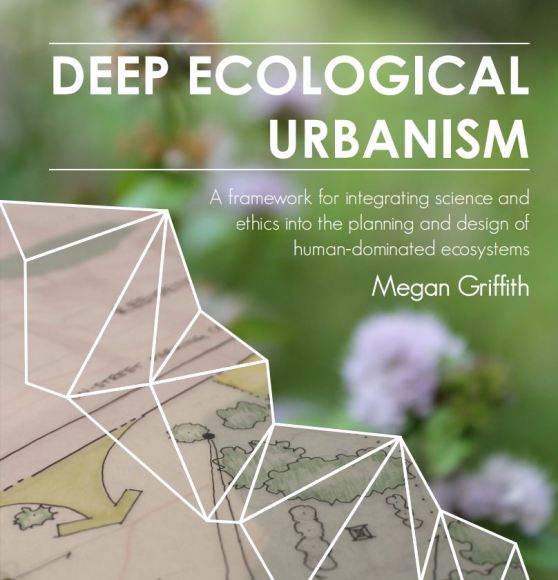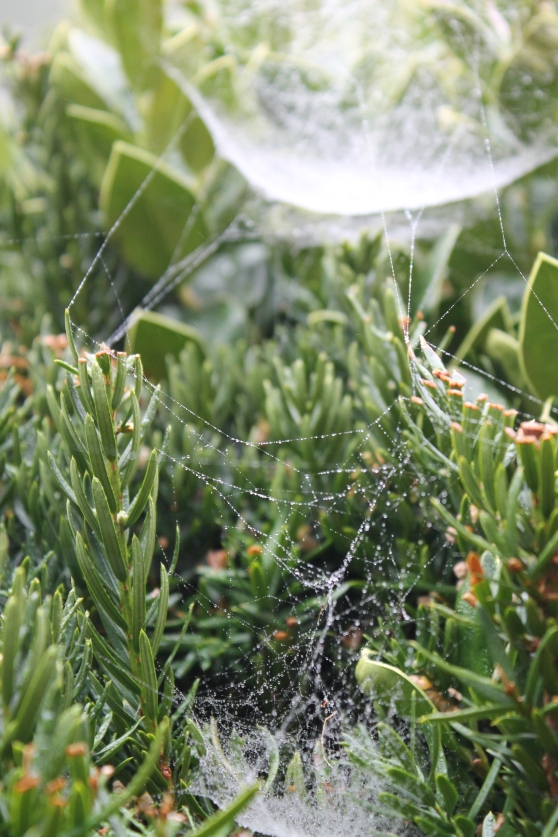I’m falling behind a bit when it comes to my literature reviews. I realized they were taking up a bulk of my “class time”, and I preferred to do things, read things, rather than just write. So without much fluff, I’ll try to catch up with the following reviews before I move onto Unit 5 | Scale.
Deep Ecological Urbanism | Unit 4: Learning from Nature | Literature Review
Biophilia | Farr, Douglas. (2008). Sustainable Urbanism. Hoboken, NJ: John Wiley & Sons, Inc.
This book had me really excited but, in truth, I’m quite disappointed. It’s a great resource, indeed, but it’s framed more like a design-manual than a piece for learning about concepts. It’s great for providing technical details of sustainable practices, but this chapter didn’t at all talk about what the term Biophilia actually means. The book does, however, have a great terminology section at the ends, and is very good at providing timelines. Hopefully, I’ll have the chance to review those items. Additionally, it has in-depth reviews of various case studies. It’s formatted like a sustainable urbanist’s guide for design, which is terrific. Unfortunately, it just wasn’t as useful for my studies at this stage.
Then again, some discussion earlier in the book provided some good insight. In Chapter 2, Sustainable Urbanism: Where We Need to Go, I found the definition I was in search of:
Biophilia: “human love of nature based on intrinsic interdependence between humans and other living systems.” [page 48]
The chapter went on to describe how humans evolved outdoors, and were previous an integral part of the cycles of nature. Then came the idea of private property. Today, there is a tendency of all types of development to suppress nature. Meanwhile, the truth about the impacts of our actions are hidden from view where we will not be bothered by the stress our lifestyles place on nature. Consequently, we are a disconnected society- disconnected from nature, from each other, from our environments… This disconnect went on to be a primary focus for the rest of this unit.
Nature Deficit Disorder | Egan, Timothy. (March 29, 2012). Nature Deficit Disorder. The New York Times. Retrieved from http://opinionator.blogs.nytimes.com/2012/03/29/nature-deficit-disorder/
“And then, in less than a generation’s time, millions of people completely decoupled themselves from nature.”
The phrase Nature Deficit Disorder was coined by author Richard Louv in his 2005 book, Last Child in the Woods. I have owned this book for years now, but I have yet to pick it up and read it. I didn’t want to do so for this course, however, because I think I’d prefer to read it in its entirety. But Timothy Egan’s article on The New York Times website provided a nice overview of his concept. The results of our disconnect with nature are devastating: obesity, stress and anxiety, depression, asthma, ADD/ADHD, and the list goes on… As Egan points out, “medical costs associated with obesity and inactivity are nearly $150 billion a year.”
The list above primarily covers health effects, but the disconnect leads to economic disparities, professional and academic barriers, higher crime rates, and so on. In a later post, I plan to share a list of the benefits of a restored connection with nature which will also shed light on the risks of a disconnect with such.
All Things Are Connected | Ethics Online (Producer), & Jenkins, Joe (Director). (2009). All Things Are Connected [Motion picture]. UK. Watched from http://topdocumentaryfilms.com/all-things-are-connected/
All Things Are Connected is a short [35:03] documentary reviewing our (humans’) history on this planet, telling the story of Earth as if it were that of a 45-year-old woman, Gaia. In her life, it was only…
- 30 minutes ago that humans invented the wheel…
- 26 minutes ago that we constructed Stonehenge…
- 10 minutes ago that Christianity was developed…
- 2.5 minutes ago that Europeans arrive at the New World
- 1 minute ago that the Industrial Revolution was sparked, “and our relationship with the Earth changes forever”
- 57 seconds ago when the human population exceeded 1 billion. Electricity, railways and cars were invented
- 33 seconds ago, the first world war erupts, followed by the second world war only a few seconds later
- 22 seconds ago then nuclear age is spawned
- 10 seconds ago, we first enter space.
- 3 seconds ago that the population reaches 6 billion; scientists warn that while Gaia will certainly survive…
Our existence has been less than an hour of this woman’s life. The point is, “we owe everything to this membrane of life,” which some will refer to as Mother Earth.
“Gaia is no doting mother, tolerant of our wrong doings, nor is she some delicate damsel in danger from brutal mankind…..She is stern and tough, always keeping the earth comfortable for those who obey the rules but ruthless in her destruction of those who misbehave”. {James Lovelock – Scientist and Author: Gaia, A New Look at Life on Earth, 2008}
The film appropriately points out, however, that although we may think of ourselves as stewards, we are actually the slayers. Biodiversity decreases as we kill off other species; yet, at the same time, the number of creatures on this planet grows as we not only expand our own population but also that of the animals we use as food. There are 2 chickens for every person, and a total of 2 billion pigs.
Such misinformed views may be based in Christianity. We confuse the “dominion“, which is spoken of in the Christian Bible, with domination. And they were surely intensified with the introduction of Francis Bacon’s scientific method- which was based on the idea that only human beings have intrinsic value, while everything else had value only for our use. This idea is caused a major shift in our philosophical views.
Then came the industrial revolution, which caused a major shift in our attitude towards nature. We pursued human progress at all costs. We perceived the natural world as an inert machine, only there to serve humans. We think of ourselves as a glorified species, but how can we argue that we express much intelligence when we have grown so ignorant of the planet? Are we really superior?
The Superior Human? | Meng, Jenia (Producer), & McAnalle, Samuel (Director). (2012). The Superior Human? [Motion picture]. Retrieved from http://topdocumentaryfilms.com/superior-human/
After watching All Things Are Connected, I went on to watch The Superior Human?, a 2012 documentary about our mislead beliefs of superiority. It was a funny little piece that proved the nonsense behind our thoughts of superiority by framing each argument frequently made in defense of human greatness as being tailored to our specific species. Our elaborate architecture would not suit the lifestyles of other creatures, yet the homes they build (some are arguably much more technical and elaborate) are perfectly suited to their own needs. We do not have the largest population, we are not the longest living species, yet we claim our “intelligence” makes us better than all others.
As the previous documentary noted the detrimental effects of Bacon’s Scientific Method, this film noted the introduction of Descartes’ ideas- that mind and body were separate from one another, and that animals lacked the “mind” aspect. Soon came the defense of vivisection. Descartes’ was indeed refuted by some; David Hume, a philosopher and “the greatest skeptic of all time,” apparently made an argument similar to the following:
“The one thing only an idiot would deny- meaning Descartes is that animals have thoughts and feelings.” [Dr. Bernard Rollin in The Superior Human?]
In our history, it is unfortunate that we’ve needed to invent words like racism, sexism, ageism, culturalism, and homophobia. Sadly, we must add one more to the list: speciesism. The term, coined by Richard Ruder, draws attention to the unjustified preference of the human species over all others. “We are all related, other species should be like kin, not like objects.”
Realigning Nature and the City, Coyote Style | Chuck. (February 12, 2013). Realigning Nature and the City, Coyote Style. Myurbanist. Retrieved from http://www.myurbanist.com/archives/9529
I found an interesting article online. The author, simply referred to as “Chuck”, tells of his experience encountering a coyote on an urban street. We commonly think of this idea of the “city in nature” (see Garden City), but what about “nature in the city”? The more artificial examples of nature would be replaced with wild spaces. The article emphasizes coexistence, and the future potential to “reprogram places from built to natural.” The author shares discussions with landscape architects which ponder such a merger. One of the landscape architects talked about this approach and noted his understanding:
“At core, there is nothing natural in the city, he said, and anything we can do that resonates with the public and creates a sustainable result, is defensible, proper and legitimate.”
I really liked the article. However, though it started out by describing a very unexpected and informal encounter, the examples discussed later on were still very manicured and planned. I believe we need to allow for more opportunities of wild growth and development.
I’d like to include one last review before I end the post: another documentary.
The Fuck-It Point | Savage Revival. The Fuck-It Point. [Motion picture]. Savagerevival.net Retrieved from http://topdocumentaryfilms.com/the-fuck-it-point/
Pardon the french! This film had the shock factor from the start with its title. What does it mean? The video starts with the following statement:
‘When you have had enough. When you decide to take matter into your own hands and don’t care what’s going to happen to you. When you know that from now on you will resist with whatever tactic you think is most effective.’
It goes back to the disconnect that was mentioned earlier. People don’t care about the planet because they live in cities, they are separated from nature and also from the destruction of so many natural things. So we need to rethink the term sustainability. One major issue, then, which we must face is the continual importation of resources; not very sustainable at all. If it is not possible to sustain civilization, then we have two options. One, we can wait for the end. Or two, we can switch to an alternative. While some people are already working tirelessly to change our current habits, others are oblivious and passive. The idea that humans are separate from nature is a relatively new development.
In the past, we have needed an entire generation to pass before the next would be open to new truths, such as the fact that the Earth was not the center of the universe. Today, however, we cannot wait for the old generation to go before the non-human centric earth belief is accepted. We view everyone and everything as resources, not as beings with which to share this planet. But it is the best cooperating species who survive together, not the strongest will survive alone.
The documentary concluded with a recommendation that viewers take matters into their own hands, though not necessarily in a peaceful or constructive way. While I don’t exactly agree with this stance, I would recommend this film for the valuable message which was its foundation: that we are no better than other species, we are not separate from nature, and we need to change the way things are…immediately.
Clearly I was much farther behind on my literature review than I thought, as I actually have quite a bit more to share. I’ll have to get to those pieces another time.
Until then, I’d love to hear what you think about all of this! I’ve shared the links to the documentaries; all can be seen for free!





